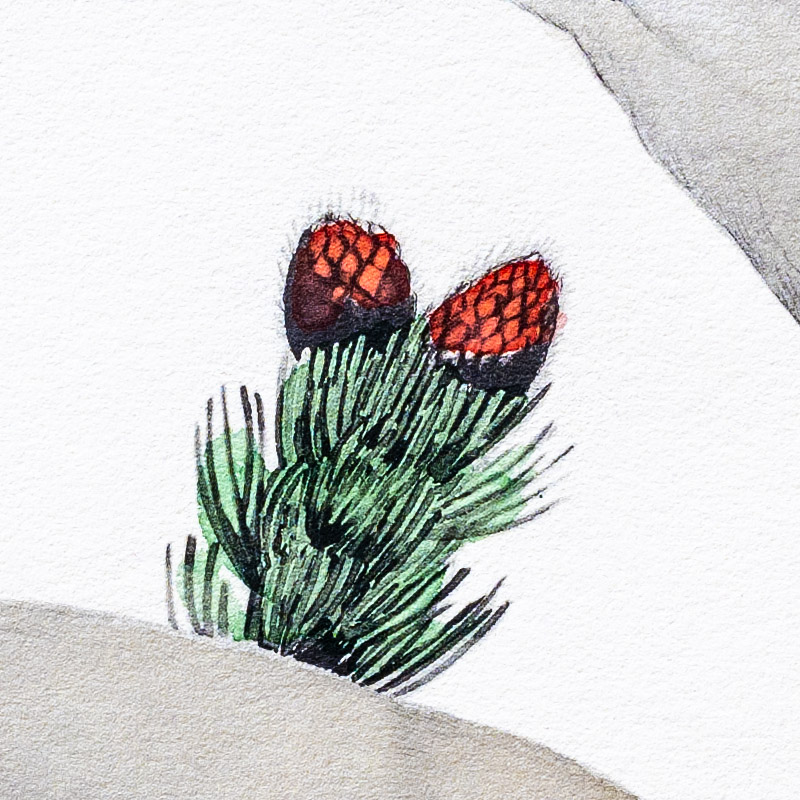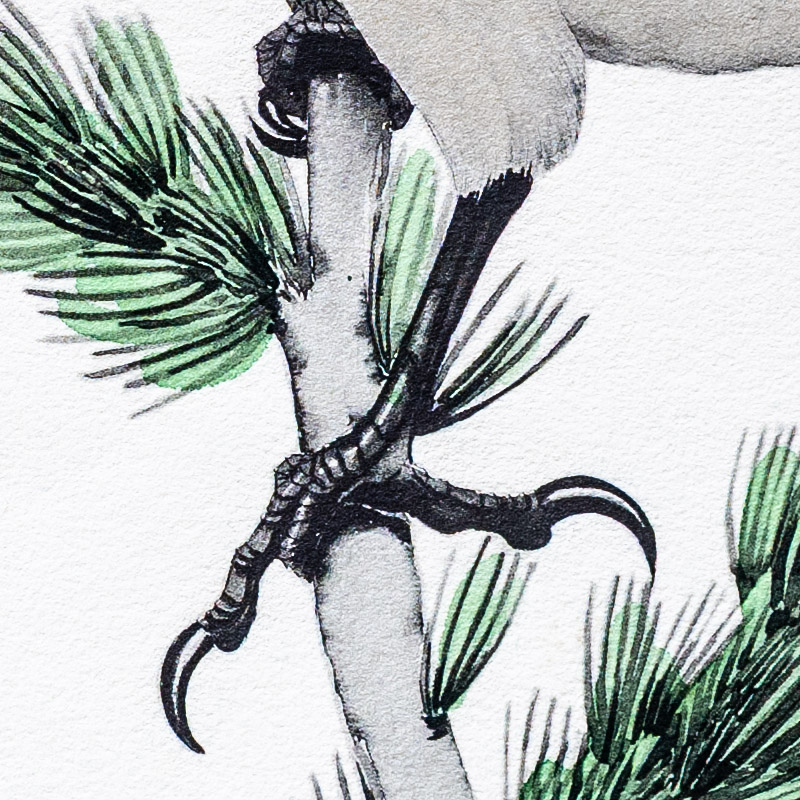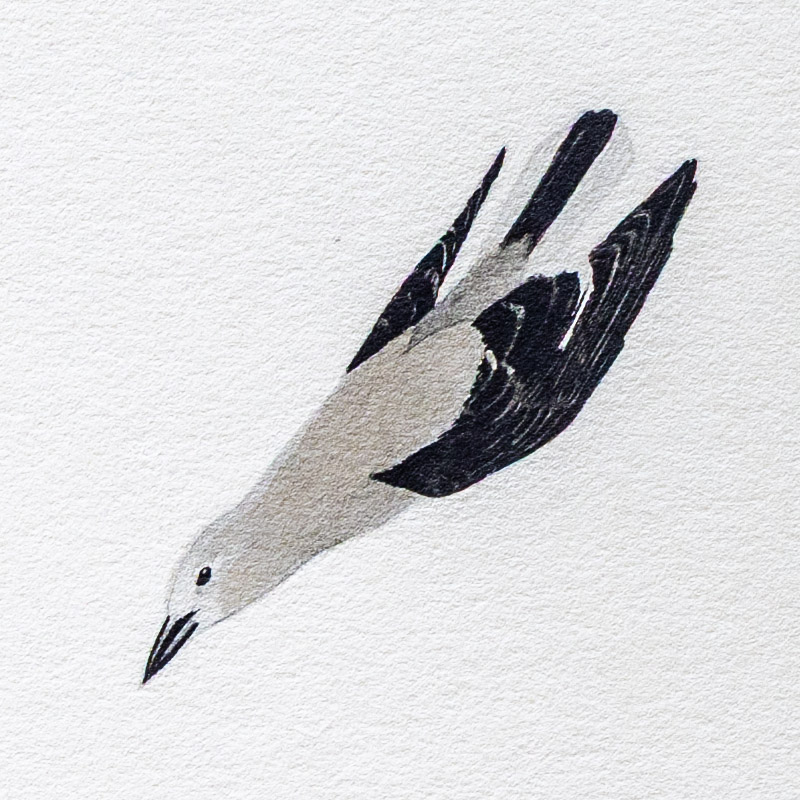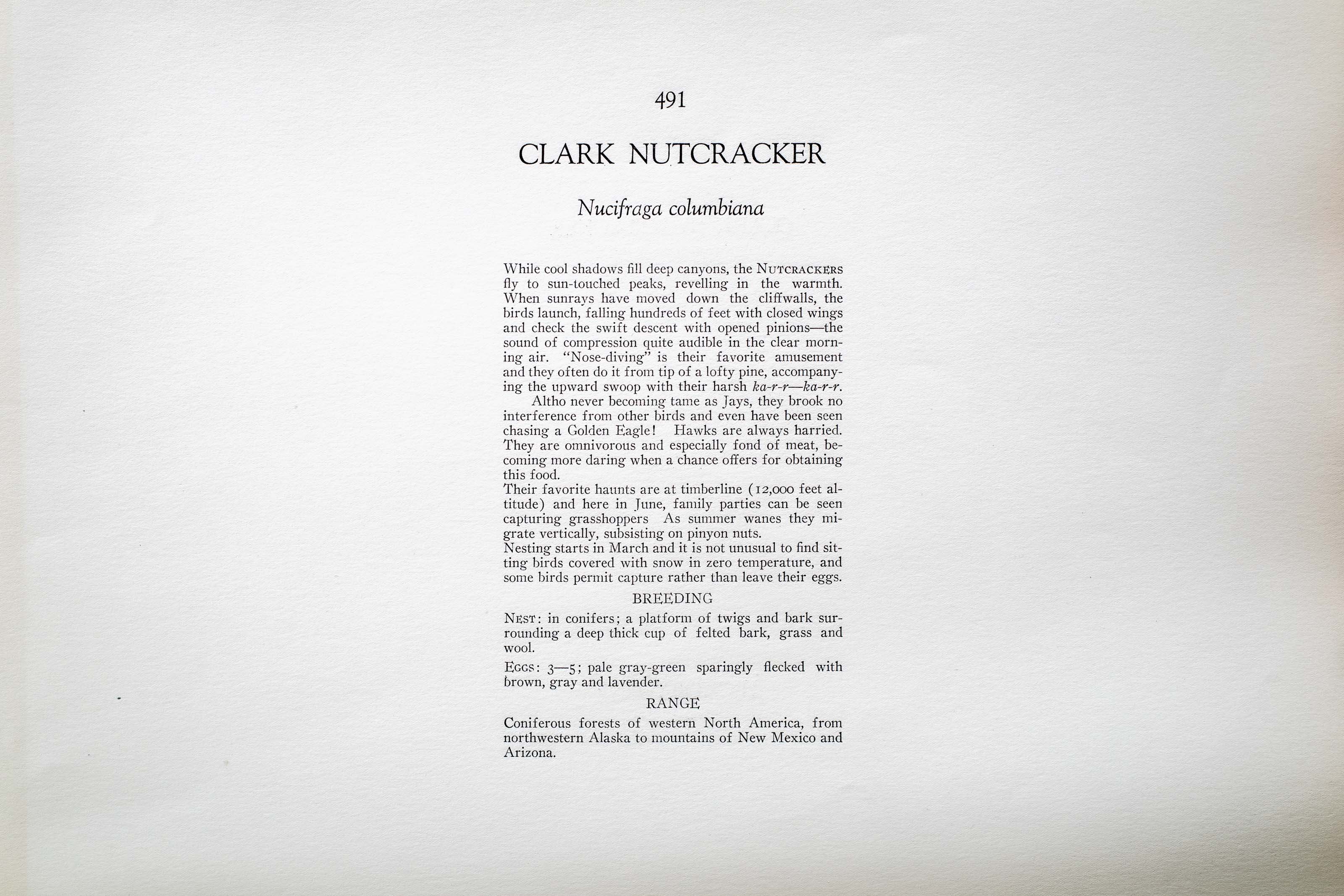






1918
1931
8
491
A team of dedicated board members, volunteers, and student interns has published every page in Volume 9. This volume includes 360 images of paintings and lyrical descriptions of birds, now available online for everyone to enjoy anywhere in the world. This is a monumental task. Each volume requires approximately 400 hours to photograph, edit, transcribe, catalog, and publish online. We need your support to complete this work.
If you're tech-savvy, have a good eye, are meticulous with details, and love structured data, please consider volunteering by emailing us at hello@rexbrasher.org.
We encourage all bird lovers and supporters to consider a monetary donation to support our mission to make Rex's work available for everyone. You can provide a one-time or recurring donation online.
While cool shadows fill deep canyons, the NUTCRACKERS fly to sun-touched peaks, revelling in the warmth. When sunrays have moved down the cliffwalls, the birds launch, falling hundreds of feet with closed wings and check the swift descent with opened pinions — the sound of compression quite audible in the clear morning air. "Nose-diving" is their favorite amusement and they often do it from tip of a lofty pine, accompanying the upward swoop with their harsh ka-r-r — ka-r-r.
Altho never becoming tame as Jays, they brook no interference from other birds and even have been seen chasing a Golden Eagle! Hawks are always harried. They are omnivorous and especially fond of meat, becoming more daring when a chance offers for obtaining this food.
Their favorite haunts are at timberline (12,000 feet altitude) and here in June, family parties can be seen capturing grasshoppers. As summer wanes they migrate vertically, subsisting on pinyon nuts.
Nesting starts in March and it is not unusual to find sitting birds covered with snow in zero temperature, and some birds permit capture rather than leave their eggs.
NEST: in conifers; a platform of twigs and bark surrounding a deep thick cup of felted bark, grass and wool.
EGGS: 3–5; pale gray-green sparingly flecked with brown, gray and lavender.
Coniferous forests of western North America, from northwestern Alaska to mountains of New Mexico and Arizona.
A 40-foot tree distributed on high altitudes in Rocky Mountains.